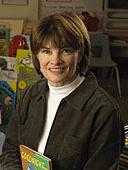06 Jan Working Memory Changes Over Course of Childhood Development
MedicalResearch.com Interview with:
Dr. Shelley Gray PhD
Professor, Speech and Hearing
Department of Speech and Hearing Science
Arizona State University
Tempe, AZ
MedicalResearch.com: What is the background for this study?
Response: Working memory is the part of our human memory system that simultaneously processes and stores incoming information. It is important to understand the structure of working memory so that more tailored assessments and interventions can be developed to help children with poor working memory learn more successfully. In this study we tested four competing models of working memory in second grade students with typical development using the Comprehensive Assessment Battery for Children – Working Memory (CABC-WM; Gray, Alt, Hogan, Green, & Cowan, n.d.; Cabbage et al., in press).
MedicalResearch.com: What are the main findings?
Response: Current theories of working memory differ on whether there are domain-specific (i.e., sound vs. visual) components of working memory with unique processing capacities or alternatively, a larger, more unified component directed primarily by the focus of attention. Our results showed that a convergence of two leading models (Baddeley & Hitch, 1974; Cowan, 2001) best fit the data.
These combined the domain-specific and general attention models. Specifically, the data supported a phonological component for phonological (speech sound) processing of material that can be verbally rehearsed, an attentional component that supports visual and spatial processing as well as speech sounds that are too unpredictable to be rehearsed, and a central executive component (highly correlated with the attentional component) that is responsible for getting the needed information to the appropriate store at the right time.
We also found that the focus of attention factor was a significant predictor of fluid reasoning and visual processing intelligence scores, which contrasts with some earlier studies in which this important correlation was missed, probably because the available tests were not sufficient to observe the broad attention focus.
MedicalResearch.com: What should readers take away from your report?
Response: In young children with typical development our results show that working memory can be divided into central executive, focus of attention, and phonological storage and rehearsal components. Children may have a profile of strengths and weaknesses across these components that could differentially affect learning.
MedicalResearch.com: What recommendations do you have for future research as a result of this study?
Response: We need to determine whether the structure of working memory changes over the course of development, whether it differs for children with disabilities, and whether knowing an individual child’s profile of working memory can help us tailor instruction to improve learning.
References:
Baddeley, A. D., & Hitch, G. J. (1974). Working memory. In G. A. Bower (Ed.). Recent advances in learning and motivation (Vol. 8, pp. 47–90). New York: Academic Press.
Cabbage, K.L., Brinkley, S., Gray, S., Alt, M., Cowan, N., Green, S., Kuo, T., & Hogan, T.P. (in press). Assessing working memory in children: The Comprehensive Assessment Battery for Children – Working Memory (CABC-WM). Accepted for publication in Journal of Visualized Experiments.
Cowan, N. (2001). The magical number four in short-term memory: A reconsideration of mental storage capacity. Behavioral and Brain Sciences, 24, 87–114.
Gray, S., Alt, M., Hogan, T. P., Green, S., & Cowan, N. (n.d.). Comprehensive assessment battery for children – Working memory. Unpublished test battery.
Note: Content is Not intended as medical advice. Please consult your health care provider regarding your specific medical condition and questions.
More Medical Research Interviews on MedicalResearch.com
[wysija_form id=”5″]
Last Updated on January 6, 2017 by Marie Benz MD FAAD

